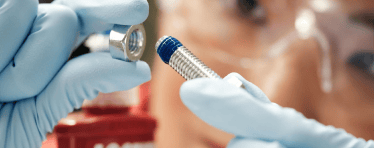
Application Techniques
Get your questions answered by browsing these topic-related FAQs.
FREQUENTLY ASKED QUESTIONS
Joining Methods and Material Considerations
What are the common joining methods used in manufacturing?
The main joining methods in manufacturing are adhesive bonding, <a style='color: #E1000F; text-decoration: underline' href='https://www.loctitex.com/en/manuals/bonding/1.1.7-thermal-joint-welding/'>welding</a>, screwing, riveting, clipping, soldering and brazing. Joining is a fundamental aspect that allows for the assembly of components into a final product. Each method has its advantages and is suitable for specific materials and applications.
Learn more ›What should I consider when selecting a material for a given application?
When choosing a material for a specific application, various factors need to be taken into account to ensure that the material performs effectively under the intended use conditions: expected mechanical forces, thermal and electrical properties, <a style='color: #E1000F; text-decoration: underline;' href='https://www.loctitex.com/en/manuals/bonding/2.2.3.4-chemical-resistance/'>chemical resistance</a>, <a style = 'color: #E1000F; text-decoration: underline;' href='https://www.loctitex.com/en/manuals/bonding/2.2.3.1-environmental-factors/'>environmental impact</a>, durability and lifespan, regulatory compliance, and <a style='color: #E1000F; text-decoration: underline;' href='https://www.loctitex.com/en/manuals/bonding/4.2.5-health-and-safety/'>health and safety</a>.
Learn more ›Why is force distribution over an assembly important when choosing a joining technique?
Understanding how a joining technique distributes force is crucial for ensuring the assembly's structural integrity, functionality, and longevity. It impacts the assembly's ability to perform under various operational conditions without failing or degrading prematurely.
Learn more ›Adhesives in Automotive Manufacturing
What are the most common types of automotive-grade adhesive applications?
Automotive-grade adhesives are widely used in vehicle manufacturing and repair due to their bonding strength, durability, and resistance to various environmental factors (e.g. chemical exposure, moisture, temperature, etc.). Common applications areas include body panels, bumpers, windshields/windscreens and windows, interior components and under-the-hood applications such as gasketing or <a style='color: #E1000F; text-decoration: underline' href='https://www.loctitex.com/en/manuals/bonding/6.6.1-threadlockers'>threadlocking</a>.
Learn more ›How do environmental conditions impact the selection of adhesives used in automotive manufacturing?
Environmental factors play a crucial role in <a style='color: #E1000F; text-decoration: underline' href='https://www.loctitex.com/en/manuals/bonding/7.3-critical-factors-when-selecting-adhesives/'>selecting adhesives</a> for automotive manufacturing, as vehicles are exposed to various environmental conditions throughout their lifespan. The choice of adhesive must ensure that it maintains its bonding strength and integrity under these conditions. The most critical environmental factors include extreme temperature, moisture and humidity, UV radiation, <a style='color: #E1000F; text-decoration: underline' href='https://www.loctitex.com/en/manuals/bonding/4.5.4-chemical-exposure/'>chemical exposure</a>, vibration, and impact.
Learn more ›What should I consider when selecting an adhesive for a particular application?
When selecting an adhesive for a specific application, several factors come into play to ensure optimal performance and compatibility. These include environmental conditions, type of <a style='color: #E1000F; text-decoration: underline;' href='https://www.loctitex.com/en/manuals/bonding/2.2.1.7-overview-of-substrate-properties/'>substrate(s) and surface properties</a>, <a style='color: #E1000F; text-decoration: underline' href='https://www.loctitex.com/en/manuals/bonding/6.2.1-cyanoacrylates/'>curing time and process</a>, temperature and chemical resistance, viscosity and application method, and health and safety considerations.
Learn more ›Strength vs flexibility: What is more important in an adhesive?
The importance of strength versus flexibility in an adhesive depends mainly on the bonded assembly's performance requirements. Generally, rigid adhesives are ideal where the bond must withstand high loads or <a style='color: #E1000F; text-decoration: underline' href='https://www.loctitex.com/en/manuals/bonding/4.4-stresses-on-joints/'>stresses</a>, while flexible adhesives are ideal where the bonded materials might experience movement, <a style='color: #E1000F; text-decoration: underline;' href='https://www.loctitex.com/en/manuals/bonding/4.4.8-thermal-expansion/'>expansion</a>, or <a style='color: #E1000F; text-decoration: underline' href='https://www.loctitex.com/en/manuals/bonding/5.2.1.4-substrate-thermal-expansion-and-contraction/'>contraction</a>.
Learn more ›Adhesive Technologies and Curing Processes
What should I consider when choosing an activator for two-part, no-mix acrylic adhesive systems?
When choosing an activator for two-part, no-mix acrylic adhesive systems, several key factors should be considered, including fixture time, bond strength, on-part life of the <a style='color: #E1000F; text-decoration: underline;' href='https://www.loctitex.com/en/manuals/bonding/4.3.5-surface-preparation-chemical-activators/'>activator</a>, activator form, material compatibility, and viscosity and flow properties.
Learn more ›What are the characteristics of two-part acrylic adhesives?
Two-part acrylic adhesives, known for their strong bonding capabilities and versatility, possess several distinctive characteristics, such as, fast curing, cured high-strength bonds, high gap-filling capabilities, good tolerance to oily surfaces, <a style='color: #E1000F; text-decoration: underline' href='https://www.loctitex.com/en/manuals/bonding/4.5.2-operating-temperature/'>temperature</a> and chemical resistance, durability, and flexibility in application.
Learn more ›What are the cure mechanisms of two-part acrylic adhesives?
Two-part acrylic adhesives cure through a chemical reaction that occurs between the two components when they are mixed. The key curing process involves mixing resin and hardener, <a style='color: #E1000F; text-decoration: underline' href='https://www.loctitex.com/en/manuals/bonding/6.2.1-cyanoacrylates/'>polymerisation</a>, cross-linking, and exothermic reactions.
Learn more ›What are the manufacturing process design benefits of UV/LED light curing?
UV/LED light curing technology offers several manufacturing process design benefits, including fast curing times, lower operating temperatures, energy efficiency, longer lifespan, consistent output, reduced maintenance of automated dispensing systems, and environmental responsibility. These benefits contribute to a more efficient, cost-effective, and adaptable manufacturing process.
Learn more ›What are UV/LED light cure adhesives used for?
UV/LED light cure adhesives are favoured for their rapid curing speed, ease of automation in manufacturing processes, and strong, clear bonds. Typical usage includes plastic bonding, electronics, automotive manufacturing, medical device assembly, optical and glass assembly, jewellery and watchmaking, and dental and orthodontic applications.
Learn more ›EXPLORE OTHER TOPICS
Everything we know -
in your hands
Whether engineering new, more innovative product designs or working to reduce unplanned plant downtime and improve efficiency, LOCTITE®X, our online learning platform,provides novices and seasoned professionals alike with knowledge and skills to address and tackle various industrial challenges.
Start learning - today

